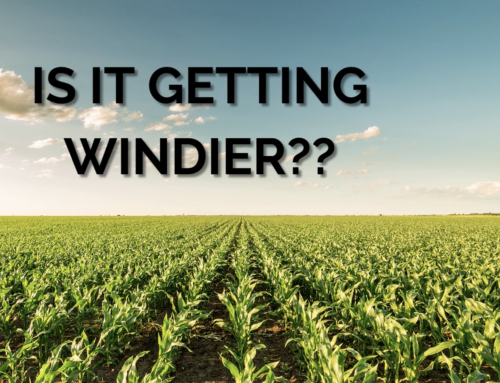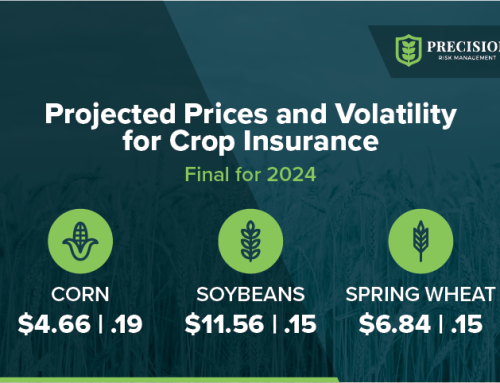Key Take-Aways:
· Effective starting this year and all years going forward
· Eliminated 65% PP claim reduction for hayed, grazed, or cut for silage, haylage, or baleage cover crops before November 1st
· There will still be a 65% PP claim reduction if harvesting for grain or seed
· Gives more flexibility to growers to manage their cover crops
The USDA has removed the requirement cover crops can’t be utilized before November 1st and still maintain full payment of Prevent Plant (PP) claims. Previously, the USDA required growers to wait until November 1st to utilized cover crops if growers had a Prevent Plant claim. If a grower uses them before November 1st, they would have a 65% reduction of the Prevent Plant payment.
The Risk Management Agency (RMA) says they are making the change because of widespread harsh weather such as drought leading to more PP claims.
This will provide more flexibility to manage the cover crops as you see fit. If you have any questions on how this program change will affect your policy or claim, your Risk Management Advisor is here to help. We recommend you contact PRM before making any cover crop decisions to ensure you receive your full PP payment.
READ THE FULL USDA STATEMENT HERE: July 06, 2021
BULLETIN NO.: MGR-21-004
All Approved Insurance Providers
All Risk Management Agency Field Offices All Other Interested Parties
Richard H. Flournoy Acting Administrator
Prevented Planting (PP) Cover Crop Relief
BACKGROUND:
Widespread weather events such as flooding, excessive rainfall, and drought over recent
years have resulted in significant prevented planting claims under the Federal crop insurance program. Given these extreme weather patterns and the need to provide producers ample opportunities to protect the nation’s natural resources, the Risk Management Agency has re-evaluated the interaction between cover crops and the Federal crop insurance program. Cover crops provide multiple benefits to current and future cropping systems, such as preventing soil and wind erosion, improving the soil’s physical and biological properties, and suppressing weeds. These benefits are especially important when soil is left bare after a prevented planting situation.
Currently, throughout Federal Crop Insurance Corporation’s (FCIC) approved procedures for cover crops and prevented planting, November 1 is used as a reference point for when a cover crop may be hayed, grazed, or cut for silage, haylage, or baleage. For example, a cover crop planted after the Late Planting Period for a crop that was prevented from being planted may be hayed, grazed, or cut for silage, haylage or baleage on or after November 1, and the producer may still receive a full prevented planting payment. If the cover crop is hayed, grazed, or cut for silage, haylage, or baleage before November 1, or harvested for grain or seed at any time, the cover crop is considered a second crop and the producer’s prevented planting payment will be reduced by 65 percent.
As defined in the Common Crop Insurance Policy (CCIP) Basic Provisions, a cover crop is a crop generally recognized by agricultural experts as agronomically sound for the area for erosion control or other purposes related to conservation or soil improvement. In accordance with the Special Provisions, corn planted on acreage following a crop that has been prevented from being planted is not considered a cover crop.
ACTION:
For the 2021 and succeeding crop years, the November 1 date in FCIC procedure, as it relates to haying, grazing, or cutting for silage, haylage, or baleage, has been rescinded. A cover crop planted on acreage claimed as prevented from being planted can be hayed, grazed, or cut for silage, haylage, or baleage at any time without a reduction to the prevented planting payment, provided the insured meets all other policy provisions. However, a cover crop harvested for grain or seed at any time will result in a prevented planting payment reduction in accordance with section 15(f)(2) of the CCIP Basic Provisions.





